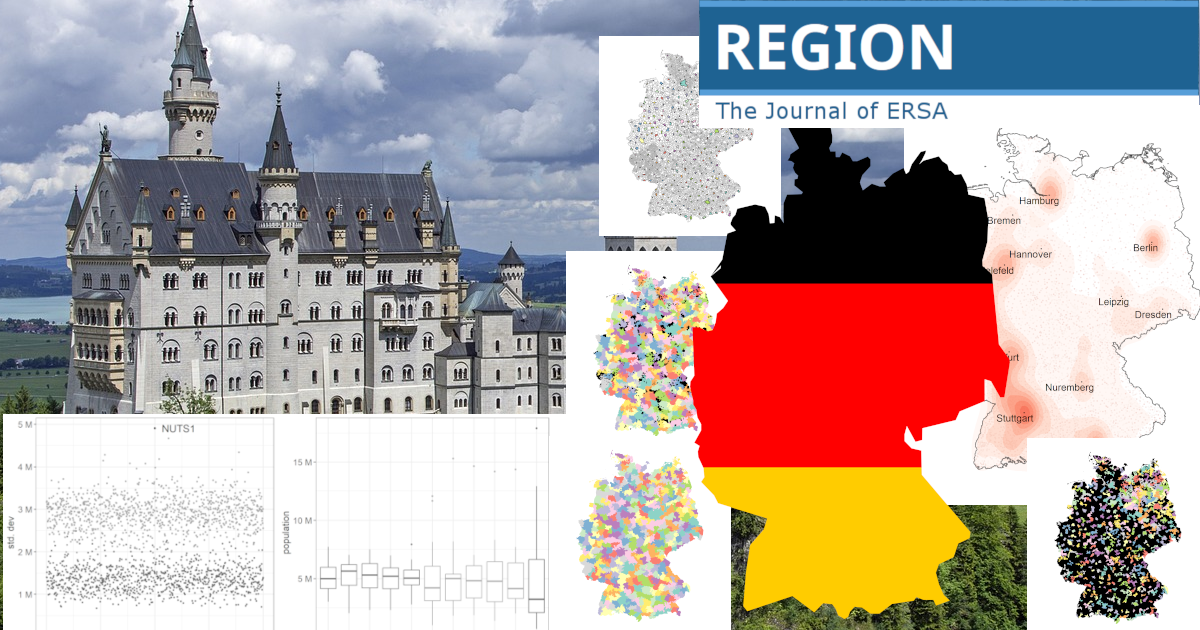Varying size and shape of spatial units
Analysing the MAUP through agglomeration economies in the case of Germany
DOI:
https://doi.org/10.18335/region.v11i2.530Abstract
When an analysis over a specific geographic area is performed, the way that area is divided into regions can affect the outcome of the analysis. Results obtained based on different geographic units can be conflicting. This issue is known as the Modifiable Areal Unit Problem (MAUP). The objective of this paper is to understand the extent to which the regional setting influences the results of an analysis with spatially aggregated variables, with a focus on agglomeration effects, in the case of Germany. Relying on a sample of manufacturing firms over 7 years we estimate a fixed effects model to explain the firm-specific total factor productivity in dependence of region-based agglomeration variables. We simulate 1000 regional settings of Germany on three scales and overtake thereby some characteristics of the administrative units, which are used as the baseline. We infer that the spatial scale and shape matter in the case of Germany.

Downloads
Published
How to Cite
Issue
Section
License
Copyright (c) 2024 Rozeta Simonovska, Egle Tafenau

This work is licensed under a Creative Commons Attribution 4.0 International License.
REGION is an open journal, and uses the standard Creative Commons license: Copyright We want authors to retain the maximum control over their work consistent with the first goal. For this reason, authors who publish in REGION will release their articles under the Creative Commons Attribution license. This license allows anyone to copy and distribute the article provided that appropriate attribution is given to REGION and the authors. For details of the rights authors grant users of their work, see the "human-readable summary" of the license, with a link to the full license. (Note that "you" refers to a user, not an author, in the summary.) Upon submission, the authors agree that the following three items are true: 1) The manuscript named above: a) represents valid work and neither it nor any other that I have written with substantially similar content has been published before in any form except as a preprint, b) is not concurrently submitted to another publication, and c) does not infringe anyone’s copyright. The Author(s) holds ERSA, WU, REGION, and the Editors of REGION harmless against all copyright claims. d) I have, or a coauthor has, had sufficient access to the data to verify the manuscript’s scientific integrity. 2) If asked, I will provide or fully cooperate in providing the data on which the manuscript is based so the editors or their assignees can examine it (where possible) 3) For papers with more than one author, I as the submitter have the permission of the coauthors to submit this work, and all authors agree that the corresponding author will be the main correspondent with the editorial office, and review the edited manuscript and proof. If there is only one author, I will be the corresponding author and agree to handle these responsibilities.




